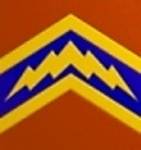While Im not quite a beginner,,Im almost at the crawling stage now

I need some of you short run specialists advice on basic assembly of a short run kit. Hopefully this will also act as an instructional thread for those who are tempted to attempt a short run kit but put off by the harder aspects of assembly.
Ive had my eye on the AZ Models Avro Tutor since it was announced, and jumped at the chance to buy it today with the intention of building it for the between the wars campaign.
A nice quick biplane build............................WRONG!
I wasnt too surprised to see that there were no locating pins on the fusalage halves, but its the wings that are going to give me the biggest headache.
The top wing is in one piece,,no problem there. Shallow locating holes for the struts are moulded in ( I can get around this quite easily), but the bottom wing is another story.
Its in two parts,,left and right, and locates onto the fusalage,,,,,but.................
.........................
There are no locating lugs, no holes, no outline of where it should attach to the fusalage "tube",,,nothing,,zip,,,zilch,,,,gar nicht.........sweet ef ay..lol
Any suggestions as to how I can get the wings aligned and securely attached ?
Im thinking wire pins or something,,but any advice from someone whos tackled one of these kits would be very much appreciated. How can I line up the pins etc,,if indeed pins are the way to go.
Nige




























